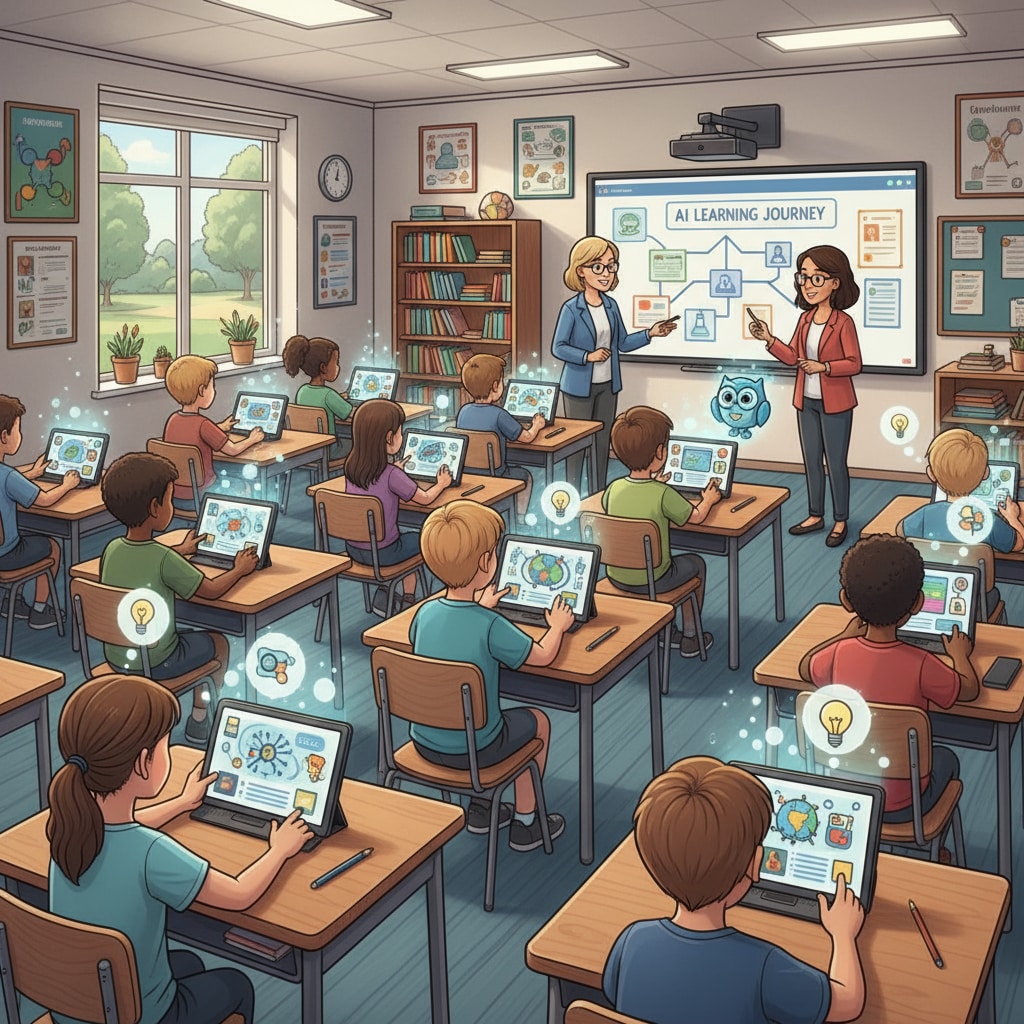Artificial intelligence, education, and learning tools have become intertwined in the modern educational landscape, especially in K12 settings. The rapid advancement of AI technology has opened up a plethora of possibilities for educators and students alike. However, with these opportunities come important considerations about the role of AI in education and where the appropriate boundaries lie.

The Promising Potential of AI in K12 Education
AI has the potential to revolutionize K12 education. For example, it can offer personalized learning experiences. Adaptive learning platforms, powered by AI, can analyze students’ learning patterns, strengths, and weaknesses. Based on this data, they can customize the curriculum to meet each student’s specific needs. This means that students can learn at their own pace, whether they need more time to grasp a difficult concept or are ready to move ahead more quickly. As a result, it enhances the effectiveness of learning. According to Britannica, AI can also automate administrative tasks such as grading assignments and scheduling, allowing educators to focus more on teaching and providing individualized support to students.

The Limitations of AI as an Educational Tool
However, AI in K12 education is not without its limitations. One major concern is the potential for students to become overly reliant on it. If students start using AI to complete tasks instead of developing critical thinking and problem-solving skills on their own, it could hinder their long-term development. Additionally, the data used to train AI systems may contain biases. These biases can be reflected in the educational content provided by AI, leading to unfair or inaccurate learning experiences. As stated on Wikipedia’s page on AI in education, another limitation is the lack of human touch. AI cannot fully replace the emotional connection and mentorship that a teacher provides.
Finding the right balance between leveraging AI’s benefits and avoiding its pitfalls is crucial. Educators need to ensure that AI is used as a supplementary tool rather than a substitute for traditional teaching methods. For example, AI can be used to introduce new concepts, but teachers should still facilitate in-depth discussions and hands-on activities to reinforce learning. In addition, educators should guide students on how to use AI responsibly, teaching them to verify information and not blindly accept AI-generated answers.
Readability guidance: In this article, we’ve explored the dual nature of AI in K12 education. We’ve seen its potential as a powerful learning tool, but also its limitations. By understanding these aspects and implementing appropriate strategies, educators can make the most of AI in the classroom while safeguarding students’ holistic development.


